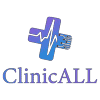Healthcare systems: Remote patient monitoring is a technology that provides health care organizations with a wealth of information about a patients condition. This information is useful for improving patient care and reducing readmissions and hospital visits. However, it can also be a source of cost savings for a healthcare system.
Reducing hospital visits
Remote Patient Monitoring (RPM) allows patients to communicate with their doctors and receive health care services from a remote location. This technology can be used to reduce costs and improve patient outcomes.
Remote Patient Monitoring is not without its limitations. It requires ongoing maintenance. Also, costs vary widely based on the specific type of monitoring. Some studies have reported a higher cost than conventional care. However, there are also many studies that show telehealth to be more cost-effective than conventional care.

Telehealth can reduce hospital visits, ED presentations, secondary care use, and the burden on nurses. In fact, one study shows a yearly savings of $233,958.
For example, a patient with congestive heart failure can avoid a costly emergency room visit. By having their vital signs monitored via RPM, they are less likely to be admitted to the ER or have a longer stay.
In addition, this type of care can reduce the expense of travel to an in-person appointment. RPM is also helpful for patients with chronic disease. Patients with chronic obstructive pulmonary disease, diabetes, and cardiovascular disease are a few examples. These conditions are expected to increase in prevalence in the coming years.
Reducing readmissions
One of the benefits of remote patient monitoring is the ability to save on healthcare costs. This can include reducing the amount of visits to the emergency department, in addition to saving on hospitalizations and secondary care costs.
The use of remote patient monitoring has been shown to be effective in different contexts. It helps to detect disease exacerbations and escalation, as well as reinforce patient adherence to treatment plans. These are important factors in the prevention and management of chronic illnesses. Several studies have found that it can improve health outcomes while reducing health system costs.
There are many different types of remote patient monitoring technologies. They range from home medical devices to video conferences with physicians. Some are mobile or tablet-based applications that can help with patient education. Depending on the type of remote patient monitoring, the cost can be relatively low or very high.
Using the latest technology, doctors and patients can monitor patient health from the comfort of their homes. These innovations can help reduce emergency room visits, improve health outcomes and encourage a healthy lifestyle.
Improving health-related quality of life
Using technology to improve health-related quality of life is a critical part of addressing the needs of patients. The use of remote patient monitoring is an innovative strategy to engage and empower patients. It provides a bridge between patients and healthcare providers, enabling better patient engagement and a more informed patient experience.
Remote patient monitoring uses mobile and wireless devices to collect physiological data and transmit it to a healthcare provider. Some of the benefits of this approach include reduced costs, improved access to care, and more efficient management of chronic disease.
Telehealth is an emerging field of healthcare. It includes teleradiology, telemedicine, and telepharmacology. A telehealth system may also incorporate a videoconferencing platform. This allows patients to stay in their homes and receive non-invasive medical interventions, including emergency care.
A simple remote patient monitoring system requires the patient to log physiological data into a smartphone application. Some of the physiological data collected could include pulse oximetry values, temperature, and blood pressure.
Identifying short- to medium-term cost savings
Many proponents of telehealth claim that it can lower the costs of care delivery. While this is true, many studies have not quantified the savings that telehealth could generate. However, a recent study has identified areas where telehealth might save healthcare systems money.
One area of potential savings involves reducing unplanned visits to acute care hospitals. The study found that patients who have their vital signs monitored through telehealth may avoid hospitalization.
Another area of promise is in reducing the use of secondary care services. A study conducted in dermatology found that a teletriage service reduced the number of in-person appointments by 89%. This can reduce hospitalizations and the cost of staffing a telehealth nurse to manage 80-100 patients per year.
Finally, the benefits of telehealth are likely to include increased productivity among clinicians. Clinicians are more comfortable sending their patients home if they know their vitals are in the right direction. They are also more productive in their consultations, which can lower health system costs.





Phenix Health delivers online health services 24/7 provided by Australian doctors and healthcare professionals.